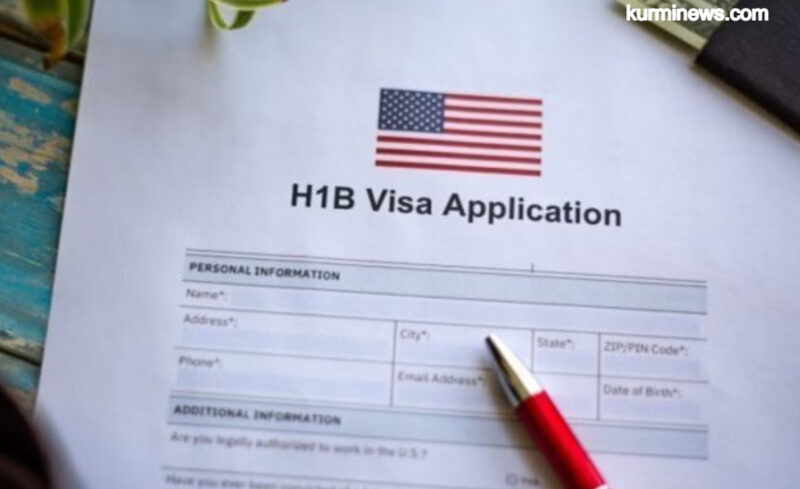rajkotupdates.news/the-us-is-on-track-to-grant-more-than-1-million-visas-to-indians-this-year: In recent times it has become clear that the United States has emerged as an opportunity hub to people from all over the world, and especially for Indian nationals looking for jobs, education or other travel experiences. In the year ahead it is estimated that the U.S. is on track to issue more than one million visas for Indian applicants, an impressive increase in the number of visas granted. This article examines the different types of visas offered, their statistics, the underlying causes that have led to the rise, and the difficulties that applicants face.
The U.S. offers various visa categories to meet the varied requirements of Indian applicants.
Also Read: Rajkot updates news when will the tesla phone be released
Work Visas
Work visas, such as H-1B for occupations that are special and L1 for transfers within the company and more have become very popular with Indian professionals. They permit individuals to live and work within America for a specific period of time. U.S. for a specific period of time.
Student Visas
Student visas, including those with the F1 and J1 allow Indian students to study in many top-ranked U.S. educational institutions, usually offering opportunities for optional instruction in the field (OPT) within their field of study.
Visitor Visas
Visitor visas, such as B1 (business) and B2 (tourism) are issued to Indians who are traveling into America. U.S. for business engagements or for tourism reasons, highlighting the economic and cultural exchanges between the two countries.
Statistical Trends
Visas given for Indians has seen a significant increase in the past 10 years.
Recent Years’ Data
Information obtained from The U.S. State Department shows an increase in visa awards, with a spike in student and work visa categories.
Projected Trends for the Current Year
The predictions for the year suggest that more than one million visas will be granted, a record which highlights the increasing ties between India and the U.S. and India.
Factors Influencing Increased Visa Approvals
A variety of factors have contributed to the increased amount of visas that are granted to Indian citizens.
Political Factors
Modifications to U.S. immigration policy and India-U.S. bilateral relations play a major impact on visa policies.
Economic Factors
The rapid economic growth in areas like technology, in which Indians make up a large portion of the workforce, affects the amount of visas that are issued.
Educational and Cultural Exchanges
The rise of cultural and educational exchanges has also resulted in an increase in the number of students and visitors’ visas.
Challenges and Issues
Despite the increase in visa issuances
Face many challenges.
Documentation Challenges
Many applicants struggle with the lengthy documents required for visa applications.
Visa Interview Process
The process of interviewing for visas isn’t easy. However, having a good plan can greatly ease the process.
Conclusion and Future Outlook
While it is the case that U.S. continues to open its doors to Indian citizens and Indians, the increase in visa applications is likely to continue, which is a reflection of the strong bonds between the two countries as well as the mutual benefits that result from their interactions.
Also Read: wellhealthorganic.com/know-the-causes-of-white-hair-and-easy-ways-to-prevent-it-naturally
FAQs
What are the most common kinds of visas that are available to Indians?
The United States offers a variety of visa categories for Indian citizens, based on the purpose for which they travel. The most popular types are:
Work Visas: For example, H-1B for special occupations and L1 for transfers within the company and O1 for people who have extraordinary skills.
Student Visas: This includes F1 for academic use and J1 for educational and cultural exchange programs.
Tourist Visas: B1 for business travel and B2 for tourist or visits to relatives and friends.
Immigrant Visas: Designed for those who plan to permanently reside within the U.S., including family-sponsored and jobs-related categories.
What has changed in been the U.S. visa policy evolved in the past few times?
U.S. visa policies have been subject to several changes over the last few times, aimed at increasing security, increasing the efficiency of the visa application process and encouraging bilateral relationships with nations like India. The policies have also been adapted to technological advances and international economic developments, often getting more stringent and other times more flexible in accordance with the current political environment.
What are the most common issues that are encountered when applying for a visa?
Common problems are:
Extensive Documentation: Candidates must be able to provide extensive documentation to prove their eligibility. This can be time-consuming to create.
Long Processing Time: Depending on the type of visa and the background of the applicant processing times may be quite long.
Visa interview: A visa visa interview is stressful because it plays an important part in the process of making a decision. Candidates must prove their purpose for traveling and the desire to return to their country of origin.
What are the implications of U.S.-India relations affecting the visa policy?
The relations with India and the U.S. and India significantly affect visa policy. Both countries have strengthened their economic, strategic, and cultural connections and ties, there has been greater ease of travel between both nations. This is evident in the growing number of visas granted, particularly for categories such as students and work visas which help to promote the advantages of technological and educational collaboration.

